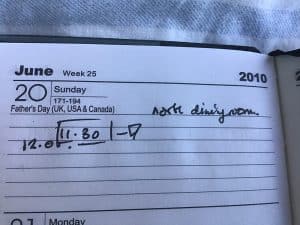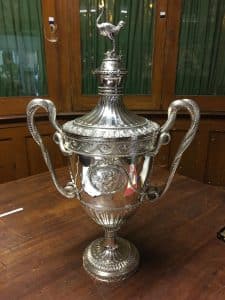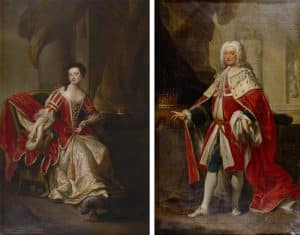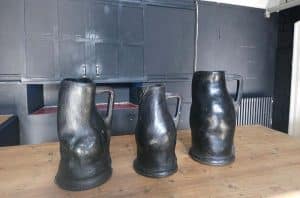Holkham Dinner Party – The Theatre of Dining
June 16, 2020 | Holkhome | 4 minute read
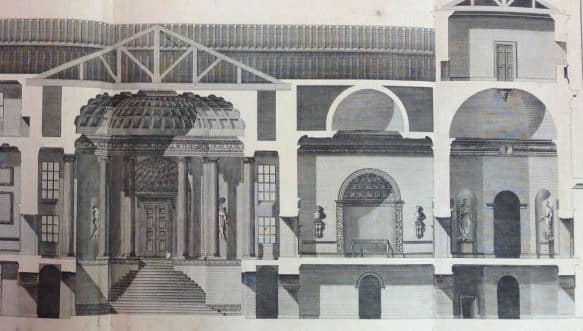
In the first part of the series, we looked at the stage on which dinners were held. This time, we will look at the show itself, as dining was a very ritualistic affair, often as much about the performance as the taste of the food itself.
The buffet niche contained two concealed doors, through which the footmen would have emerged carrying your (hopefully still hot) food. It is quite a way from Holkham’s kitchen to the main dining room, even using back stairs and passages. As every good host should know, food needs to be served hot, and to do this, a number of artifices were used, include keeping a stove in the room behind the buffet to keep plates warm.
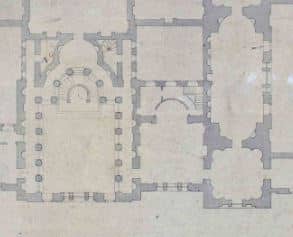
Plan of the North Dining Room
Working in an eighteenth-century diner’s favour, however, was the fact that the preferred vehicle to eat from was not porcelain, but silver. Silver is an excellent conductor, helping dishes to heat up very quickly; a number of serving dishes in the Holkham collection are double skinned, with space for hot water or lighted candles to be stored, ensuring the dishes were kept as warm as possible.
Holkham has a remarkably intact set of George III silver, which is still used on formal occasions. This set was acquired by T.W. Coke in 1777, supplied by James Young and John Carter – unfortunately, at the same time, he sold off the original silver, which had been commissioned by Thomas Coke in 1718 from the celebrated silversmith Paul de Lamerie ‘greatest silversmith working in England in the 18th century’.
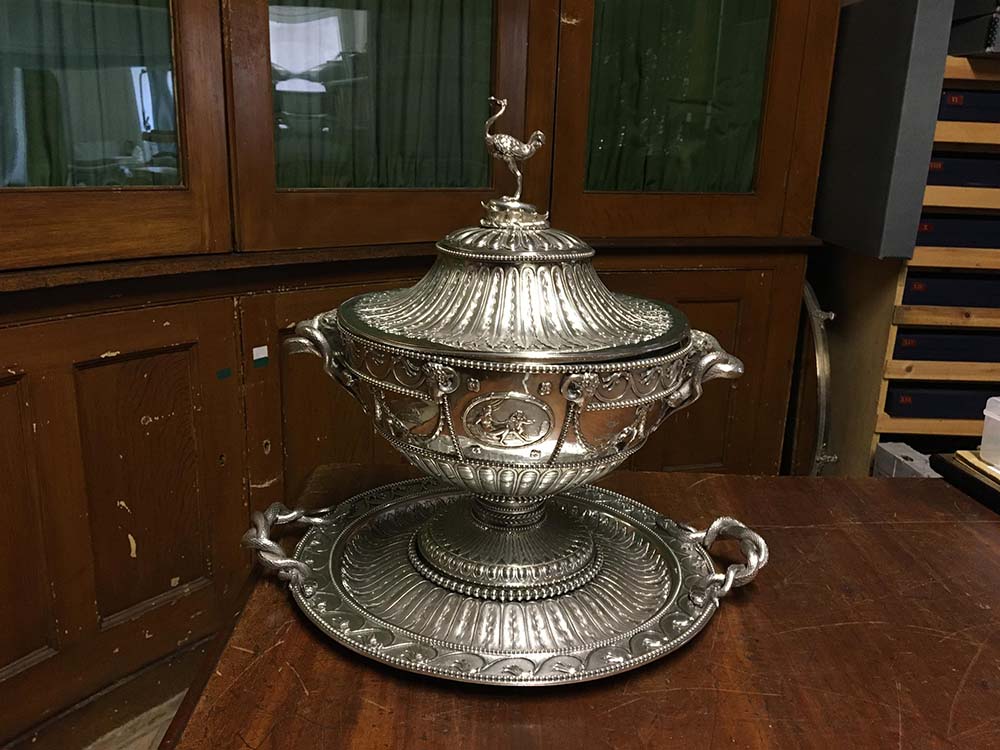
George III silver
It is from the silver that we get the real magic of an eighteenth-century dinner party; in an age before electric light, imagine the sparkling of the silver dishes under the candlelight, the candles themselves supported in silver candle holders. Chandeliers, although impressive, created shadows directly below them, making them especially unsuitable to light dinners, whereas candles could be placed at strategic locations round the room to best illuminate the space. Different accounts exist of the number of candlesticks needed to adequately light a room, with the architect Isaac Ware counselling that a stucco room could be lit comfortably by eight. It is difficult to imagine today, but the soft candle light, reflecting from the gilding and from the silver, must have created a wonderful atmosphere— a description, not of Holkham, evokes the effect, describing how ‘a profusion of light fell upon the [table] cloth, and as everything else was of silver….the whole had an aspect of pure light’.
From written accounts, we also know that, though increasingly porcelain dinner services had become the norm, silver plate continued to be used at Holkham, with Chester Harding commenting in 1824 that ‘Every dish was of silver, gold knives and forks for dessert, and everything about the table of corresponding costliness’.
The table in this room is one of its interesting features. The design was patented by the firm of Johnstone, Jupe & Co. in 1835, and is designed to expand and contract whilst maintaining its circular shape. The video shows the mechanism working, expanding the table from its smallest size – 5 feet in diameter – to its largest – 7 ft 3in. in diameter. The table is still used for dinners today, though it is laid with a modern porcelain service rather than the 18th century silver!
Here’s a video of Ryan our Houseman, showing how the extendable table works.
Back to Journal Back to Journal
